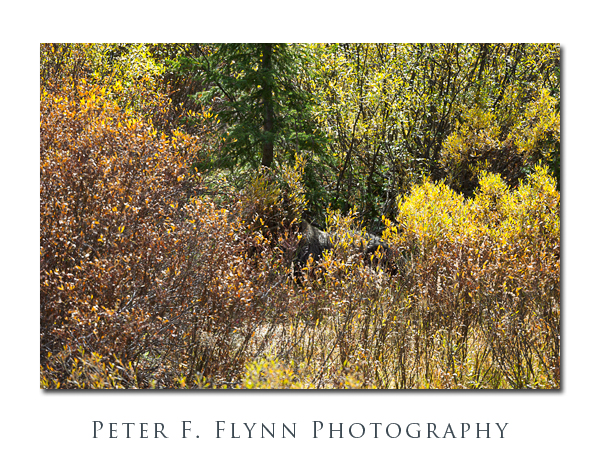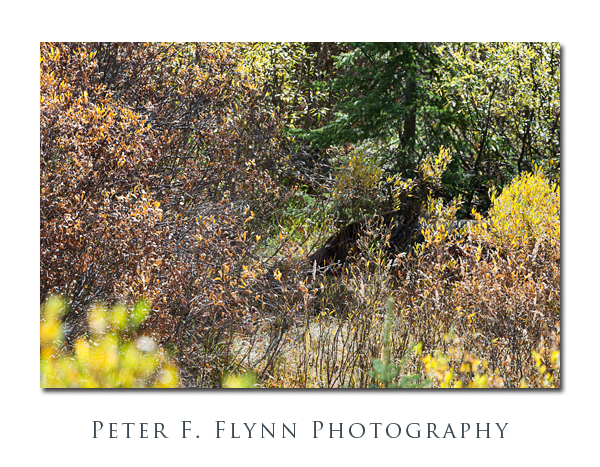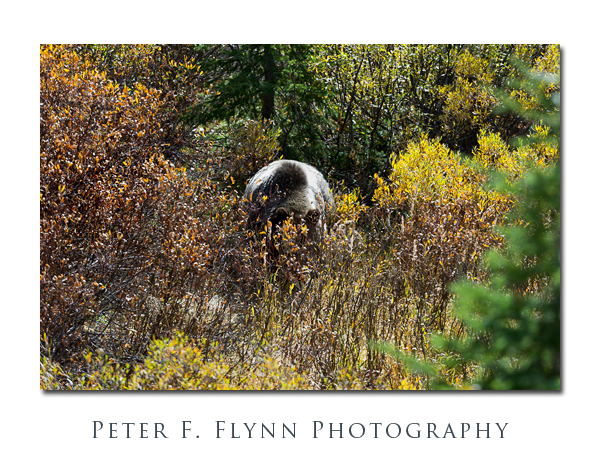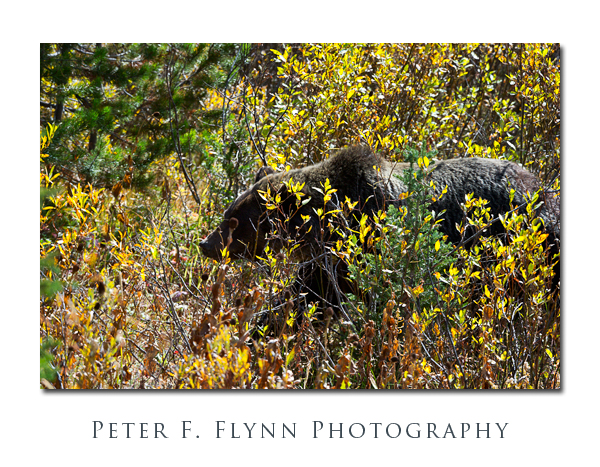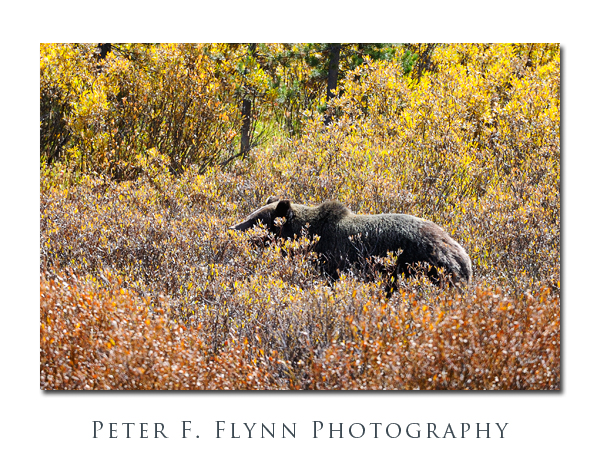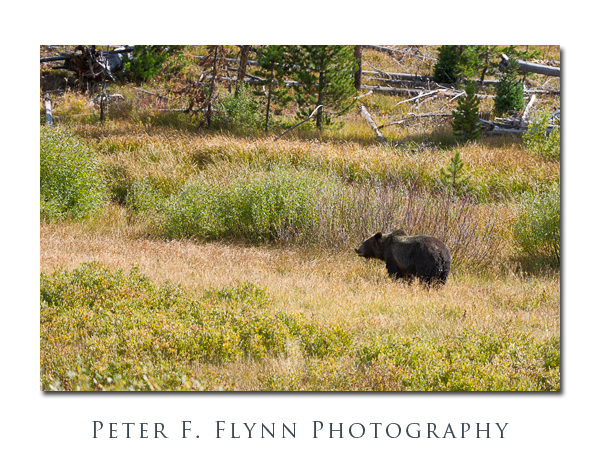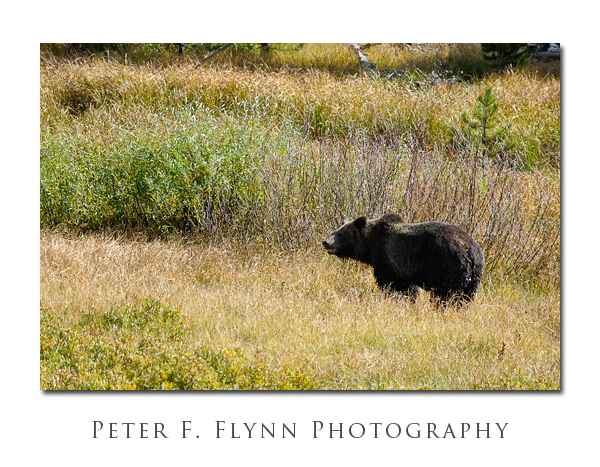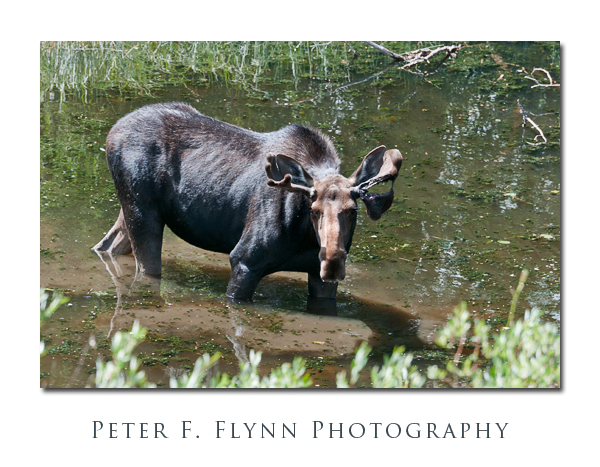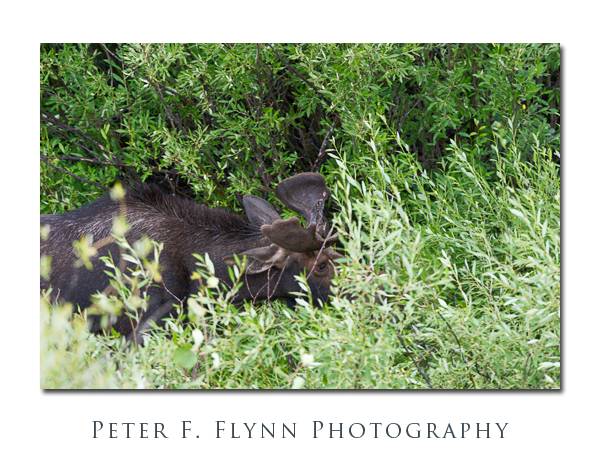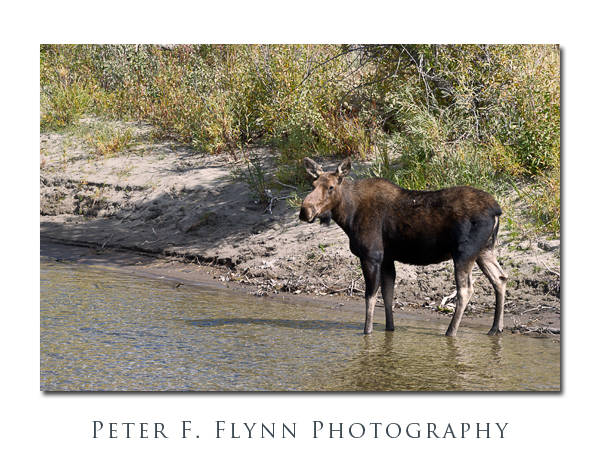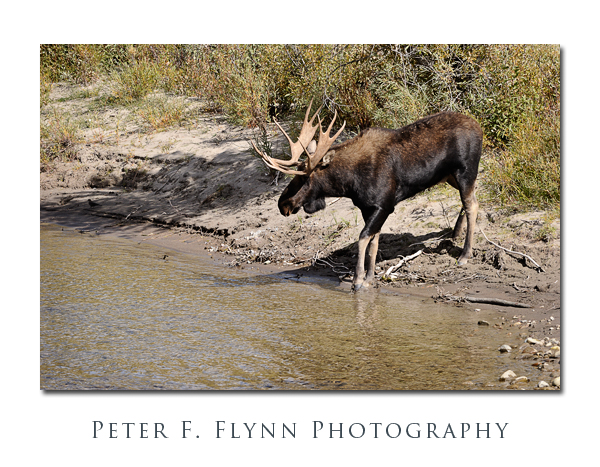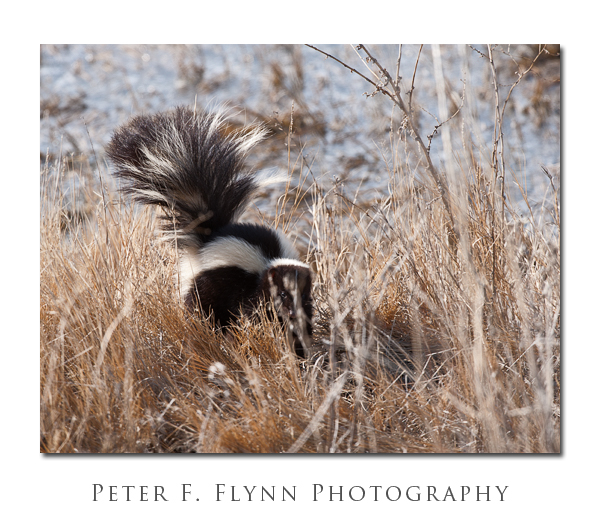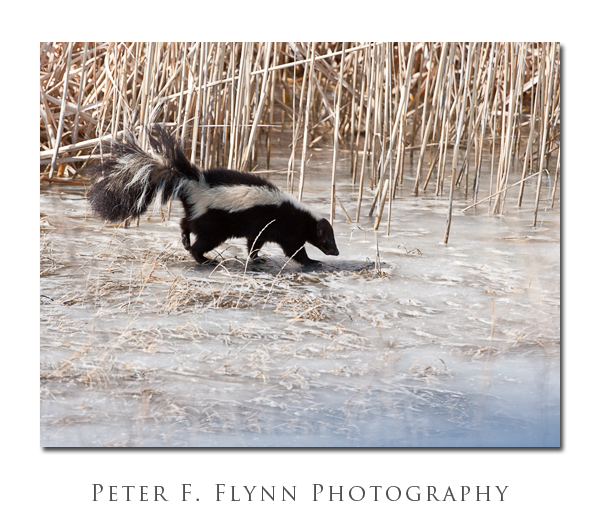On a run down to Grand Teton from Yellowstone we encountered a small group of folks peering off to the side of the roadway. This, of course, is the signature of some sort of potential wildlife encounter. Often as not, it is a Mule Deer, but this time – score – a napping Grizzly Bear. Here’s the thing, Ursus arctos horribilis does not usually snug in for too long, and soon enough, the big bear is off in search of its next meal.
Is there really a bear in those bushes though?
Yes, we’d recognize those ears, that shoulder hump, and that silver back anywhere. Like I said, it *was* a napping Griz. Now that its awake, Griz moves out with a purpose.
So how close is that bear anyway? Let me just see…FX format, 400mm, and wow, that Bear pretty much fills the frame. Dang close. Now before anyone gets judgmental, I *did* look around and confirm that I was much quicker than most of the people nearby. Anyway, by now the Park Service docent is freaking out, yelling for everyone to get back into their cars. Good idea actually, at least for the plebs, but instead I dash up the road, well ahead of the bear. I’ve used this strategy to pretty good purpose from time to time (but kids, DO NOT emulate this behavior).
Griz finally emerges from the underbrush and into a meadow. A most excellent specimen of the species.
Images in this entry were recorded in the John D. Rockefeller, Jr. Memorial Parkway at around noon of September 23, 2010, using the Nikon D3s and the AF-S VR Zoom-NIKKOR 200-400mm f/4G IF-ED lens at 400mm. Exposures were all at f/8 with shutter speeds around 1/800s (+0.33 EV), ISO at 1000.
Copyright 2011 Peter F. Flynn. No usage permitted without prior written consent. All rights reserved.
